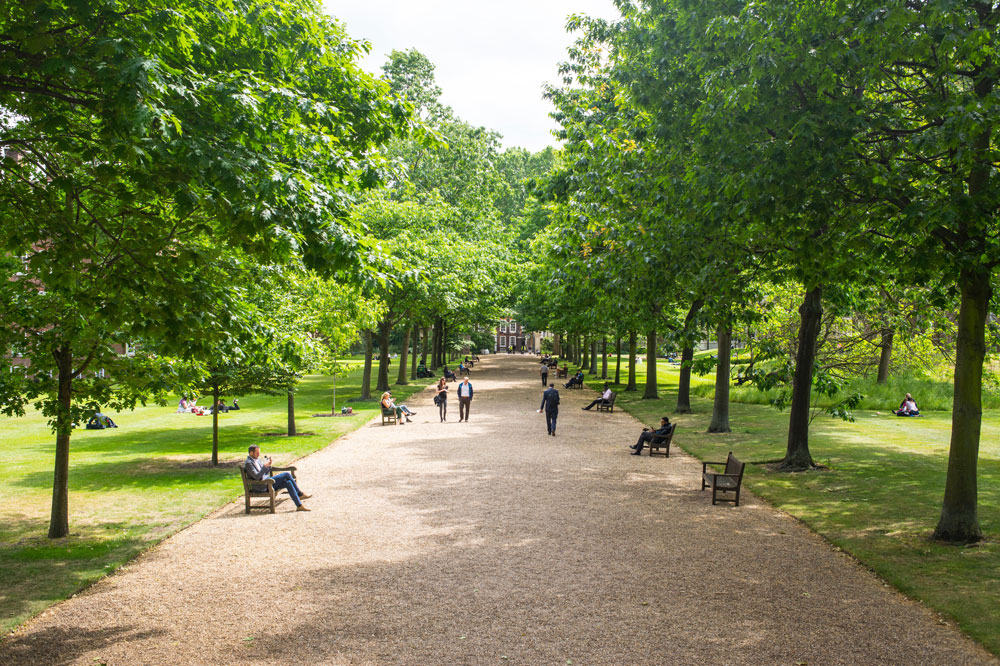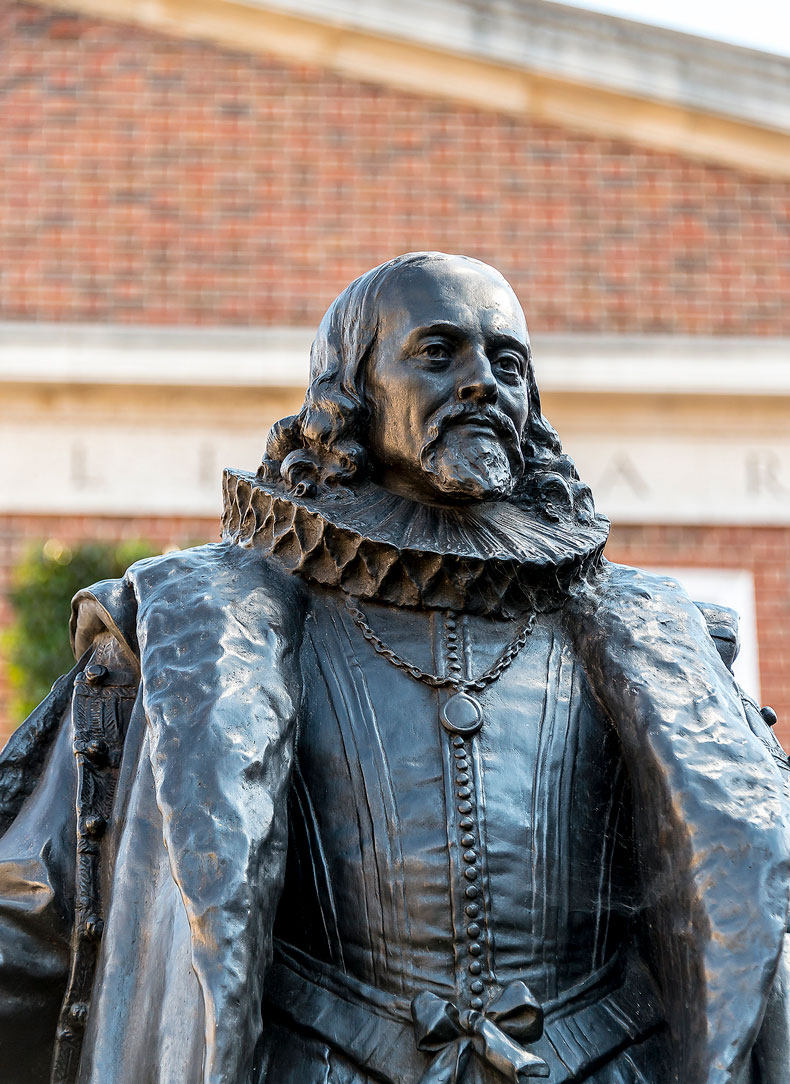Photo of The Walks from a second-floor window: used under Creative Commons licence [CC BY-SA 2.0]
Photo of the statue of Francis Bacon: used under Creative Commons licence [CC BY-SA 2.0]

The green, green grass of Gray’s Inn Gardens
Apollo has recently moved office and now overlooks one of the most generous and attractive green spaces in central London. The Walks, to give this space its proper name, are the open setting for Gray’s Inn, one of four Inns of Court – the enclosed legal societies from which, exclusively, barristers can practise in England. After the Great Fire of 1666, the lawyers secured this generous layout as protection for the Inn from rapid development around it. The gardens date from 1608 when Sir Francis Bacon was elected Treasurer of the Inn, and they express and enshrine his ideas about landscape. Simple but strong modelling, from terraced grass sides, marks both the north and west extremities. Fine trees, discreetly placed, set it all off. Towards the south the planting becomes more exuberant, especially in summer, with roses, hollyhocks and clematis scrambling over the railings and outer walls. In recent years, it’s all become more accessible to outsiders, rather than merely glimpsed through railings on Theobalds Road. The public can enter at lunchtime on weekdays and small children from the City Junior school, located within the Inn, now play on the area closest to Theobalds Road, the sound of their cheerful chirruping a salutary background to proceedings in the buildings alongside.
That is now. But in the late 1980s the Walks were under threat. The Benchers of Gray’s Inn had decided to seek planning consent for a pair of office blocks, all but blocking the views into the gardens, essentially walling the Inn off, and all to boost their rental income. They had commissioned a blue-chip firm of architects, Robert Matthew Johnson-Marshall, but the bland result suggested that the distinguished practice may have been uncomfortable about their commission, essentially an exercise in top-class heritage vandalism. The continuous street view from Mecklenburgh Square, running up Doughty and John Streets to meet Theobalds Road, across which stands Gray’s Inn, is a masterpiece of Georgian landscape planning and has remained an engrained feature in the city fabric, respected by the various estates as they set about development. The Benchers’ scheme would have destroyed that homogeneity, ‘a carefully articulated necklace of green spaces and built-up areas’, as I wrote in the Financial Times at the time.
A view of The Walks from a second-floor window at Gray’s Inn. Photo: James Petts via Flickr
As so often in central London, where every inch is weighed in gold, there was nothing new in the avid scramble for profit in the face of sustained objection. Scroll back to the late 17th century and an episode involving the very same body of men, the Benchers of Gray’s Inn, inverted the situation. Then, in 1680, the lawyers found themselves fighting off a developer, one Sir Nicholas Barbon. His sights were set on the rich pickings around Red Lion Square in Holborn, nearby, but he hadn’t reckoned with a concerted and physical opposition. He found 100 men of the law rolling up their fine lawn sleeves, the better to hurl bricks at the labourers he’d employed. To reinforce the point, the barristers seized a couple of the brickies as hostages. Barbon, an economist who found his metier as a fleet-footed speculator and a figure of great influence in London at the time, wisely withdrew.
The Benchers of Gray’s Inn did likewise, almost three centuries later. People noticed that their Royal Bencher was the Prince of Wales, then at the height of his architectural and conservationist interests. Perhaps strings were pulled, or soundings were taken (as lawyers like to happen), but the prospective office blocks, of no architectural distinction, were easily wiped from the record.

The statue of Francis Bacon (1908) by Frederick Pomeroy at Gray’s Inn, commissioned to mark the tercentenary of Bacon’s election as Treasurer of the Inn. Photo: Steve James via Flickr
Like the staff at Apollo now, I had my eye on the site. Hearing of the dastardly plans I quickly wrote my piece for the FT pointing out the amusing irony offered by the late 17th-century fighting Benchers, set against their speculating modern counterparts (and not forgetting to point out their Royal Bencher’s well-known tendency to oppose publicly schemes with which he found himself in disagreement).
I entered the piece for the BP Arts Journalism prize that year and was awarded the runner-up’s prize. With the handsome sum of £250, I bought myself the best office chair on the market. And it is on my Hille chair that I sit writing this at home, not so many metres from that once contested site.